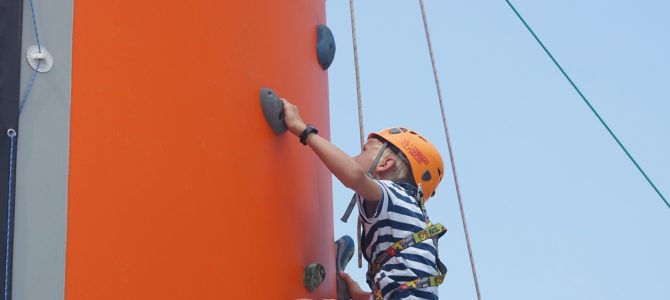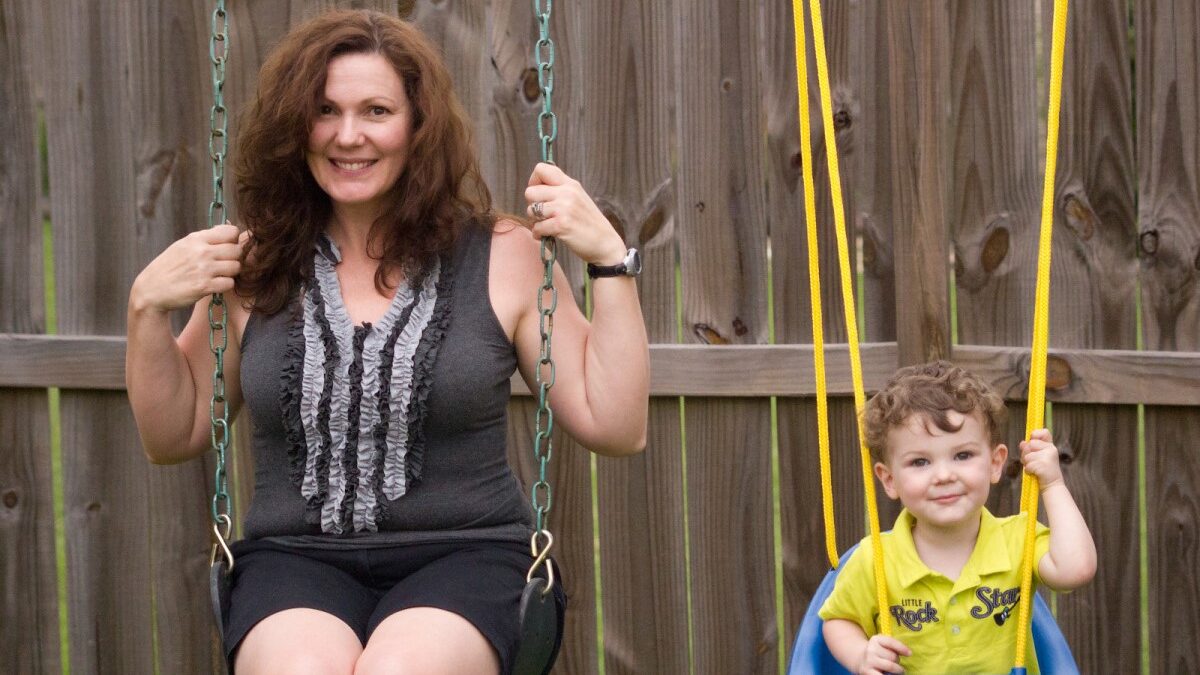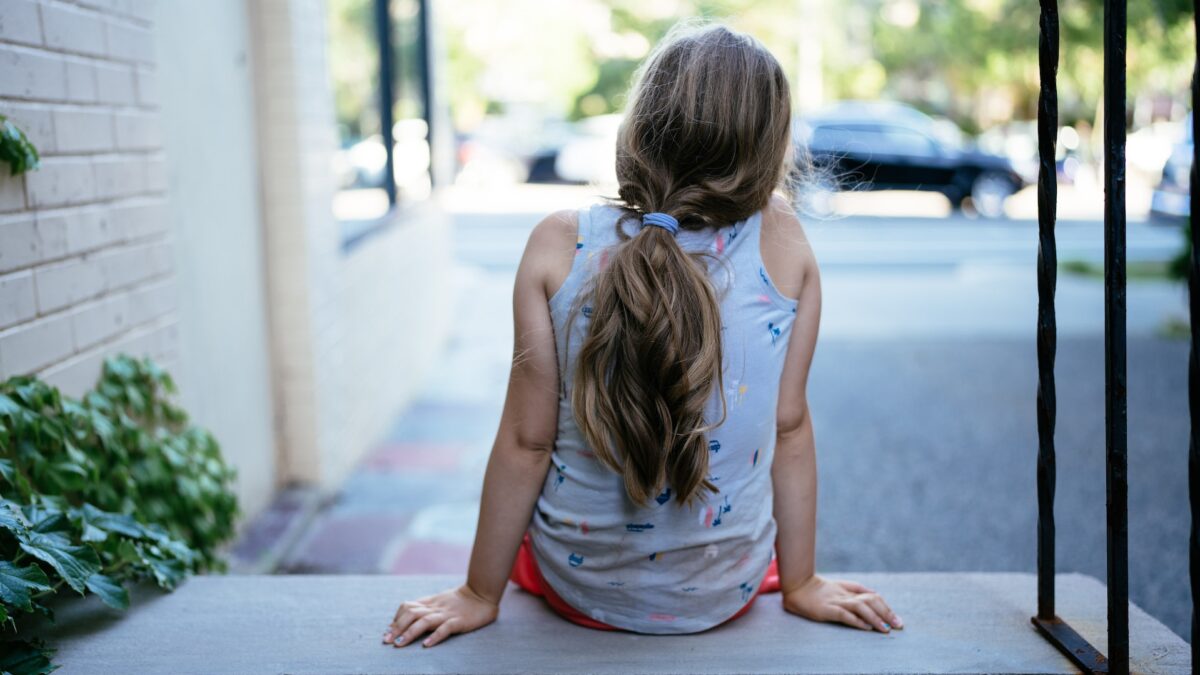
As my husband and I prepare for the birth of our first child, the obligatory research of all things baby has led to my increasing amazement at the extent of government safety regulations on baby items.
Certainly, government warnings for decades now have made me aware how lucky I am to have escaped death—whether from asphyxiation between too-wide bars, ingestion of lead-based paint, or lopping off of limbs due to flimsy latches—in the old iron crib at my grandparents’ house. However, regulations of the past few years have moved beyond common sense or even statistical research to the point of excessive oversight.
While I am not surprised that big government increasingly intervenes in our daily lives, the stringency of recent guidelines seems to me a symptom of a much deeper cultural infirmity. Protecting children is good. It is, in fact, a crucial element of parental responsibility toward helpless offspring. However, America’s safety obsession reveals not so much a healthy desire to protect our children as the gangrenous decay of a society that has rejected belief in anything transcendent.
This exclusive focus on protection in the here-and-now is a logical outcome of the workaholic, wealth-accumulating, non-religious life that many Americans lead. In lieu of time, values, and spirituality, we give our children physical safety. As we submit our children to this purely imminent view of life, they will faithfully learn the lesson that safety is the highest good, and that the ultimate responsibility for it lies not with themselves, their parents, or even their communities, but with bureaucracy.
A Case Study: The Great Divide of Two Decades
In high school I had a Saturday job at a children’s consignment store. Besides acquiring acumen in the plethora of innovative latching devices for strollers, playpens, car seats, and the like, I also learned the importance of watching out for recalled items. We kept a big binder of recall warning printouts, and any items brought in for consignment had to be checked against the book.
However, as I have discovered, child safety precautions were just heating up in the 1990s. At a recent visit to a 2018 children’s consignment store, I noticed that there were absolutely no car seats or cribs for sale. A later check of the store’s website indicated that they will buy cribs, but not car seats. Apparently the liability hassle is too great.
Understandably, secondhand stores are well-poised either to enable people to keep using items deemed dangerous or to assist as middlemen in taking them off the market. My experience with recall notices made me wary of a used playpen I was recently given. Sure enough, it was one of 1.2 million playpens affected by a 1997 recall. I don’t advocate taking chances for the sake of cheapness, and even if I could still have received the latch covers that fix the problem, I would probably have said “No, thank you” to the offer.
Nevertheless, federal regulation in this past decade has moved far beyond recalling ill-designed items and offering helpful guidelines for consumers into detailed legal prescription for manufacturers and sellers. The U.S. Consumer Product Safety Commission (CPSC) “Resellers Guide to Selling Safer Products” offers a sampling of how things have changed. Among the things I’ve learned are the following.
Since June 2011, new safety regulations for cribs stipulate that absolutely no drop-down sides be allowed. This in addition to pre-existing guidelines, including: No corner posts over 1/16 of an inch tall. Or slats more than 2 3/8 inches apart. Or cutout designs in head- or footboard. And don’t even consider putting soft bumper pads around the sides! (That’s not technically a regulation, but a strong recommendation.)
Moreover, not only is it not enough to require these things for new cribs, but it is illegal to sell secondhand cribs that do not meet these criteria, even at private yard sales. What should you do if you find yourself stuck with an old and now unsafe model? According to the CPSC, destroy it.
Car seats now come with expiration dates. Six or seven years after the manufacture date, purchasers are instructed to throw away a car seat. Yes, throw it away, regardless of how sturdy it may seem or how carefully it has been cared for. (Even though the potential for plastic disintegration shouldn’t really be a problem until it gets closer to ten years old.)
Since February 2013, playpens have new standards specifying such things as the type of locking mechanisms for rails, the size of mesh in the sides, and the acceptable height any rivets may protrude from the outside of top rails. Those made before 2013? Destroy or throw out.
Baby bath seats manufactured prior to December 6, 2010, should be (yet again in bold, red letters on the CPSC document) DESTROYED.
Baby walkers must either have floor-gripping strips on the bottom or be at least 36 inches wide, so that they will not fit through a standard doorway. Unsurprisingly, CPSC does not advocate using unsafe walkers for doll play or creative arrangement of potted plants; their only possible end must be destruction.
Moreover, aesthetics must always take a backseat to safety. Government documents warned me that it is not safe to own a variety of baby products, including car seats, mattresses, bathtubs, and playpens, unless they have permanent, visible warning labels affixed to them. Want to guess what to do with items that do not meet these requirements?
Aside from the overflowing landfills, epic smashing parties, and gigantic crib bonfires that seem a necessary byproduct of all this regulation, I have to wonder what unintended side-effects might also be wrought on the adults who buy these products and the children who use them. I cannot help thinking that we are purchasing our children’s physical safety at the price of some part of their humanity.
A Pound of Prevention Is Better than an Ounce
Now, do not get me wrong. I in no way wish to advocate for purposefully risky products or behaviors. I also understand that when my child is born, motherhood hormones will kick in and I will probably go into full-on mother bear mode. However, I’d like to think that my rational faculties will still remain at least partially intact.
The CPSC document presents data on the number of child injuries and deaths related to various affected items. From a purely statistical perspective, most of these numbers represent an infinitesimal fraction of the children who have used such equipment. While data on infant deaths in car accidents pre- and post-car seats undeniably confirm that this was a wise innovation, many of the other items have probably caused fewer deaths than common household articles such as pillows, blankets, and bathtubs.
Cue the vehement trolling: This woman is a heartless monster who does not understand that the death of even one child is a tragedy! On the contrary, I wholeheartedly agree that a child’s death is a tragedy. I also happen to believe that the death of a teen, adult, or elderly person is tragic, not to mention that of the child in-utero. My point in evaluating the statistics is not to discount the deaths of the children killed through equipment malfunctions. Rather, it is to call into question the efficacy of government regulation as a means to prevent child mortality.
The proverb speaks wisdom: “An ounce of prevention is worth a pound of cure.” Unfortunately, American society has done some shady multiplication on this and come to the conclusion that a pound of prevention will cure everything. Or maybe more than a pound. But surely with enough prevention, we will eliminate the problem.
However, if the problem is that even one child’s death is unacceptable, when will such regulations succeed in their goal? Zero-tolerance ultimatums tend to have a zero percent chance of being met. No amount of government regulation, or even loving parental oversight, can prevent all tragedies, let alone all accidents.
We used to be reminded of these truths by such great literary figures as Oedipus and Achilles. Insisting on more thorough preventative measures is not necessarily wrong, but it will never solve the problem of child mortality. Regardless of how careful we are, some children will continue to die in freak accidents. It is sad and terrible, but it is true.
The Loss of Transcendence and the Bureaucratic Deity
One way or another, humans must wrestle with the questions “What is life?” and “What is death?” At one time many people confronted these questions through philosophy, theology, or great works of literature. Today, most of us manage to avoid the questions aside from the few arresting moments when tragedy looms, whether in our own lives or those of others.
Meanwhile, we rush hectically through our over-scheduled lives trying to make sure we are giving our families the very best fill-in-the-blank. Our society’s a-religiosity reveals itself in this quest to control everything in our surroundings. If there is nothing especially transcendent—nothing, or at least nothing much, beyond the here-and-now—then providing pleasure and avoiding tragedy become the ultimate meaning of life.
When tragedy does strike with an especially stunning blow, such as in the accidental death of an infant, this purely secular mentality grasps desperately for answers. Once upon a time, most Americans had deep, sincere spiritual beliefs that shaped our lives and helped us deal with tragedy. Take these away, and the biggest entity left to fill the deity vacuum is government. This is where we now turn to solicit our answers or, more often, to make our demands.
“Why did this happen?” asks the child. The parent, unequipped to answer with any transcendent view of reality, can only pass the buck to Big Brother, parroting the question, “Why did this happen?” In the labyrinthine halls of bureaucracy, the question echoes endlessly, passing from one ineffective committee to another, and never satisfactorily answered, for it is a question not of imminent governmental oversight but of transcendent reality. Thus, the bureaucratic god merely demands more sacrifices, establishes more laws, prophesies against some new supposed enemy, and pushes further out the bounds of hope.
I pray daily for my child’s safety, and I would no doubt be devastated were a tragic accident to take his or her life. Assuredly, I will do everything in my power to protect the earthly life of my child, but should the catastrophic happen, I also have the comfort that even death will not be a tragic end for my child. For me and for my child, the answers of life and death are grounded in the promises of a transcendent God who has lived, died, and taken away death’s sting. Compared to this, stricter government safety standards seem a poor substitute.









